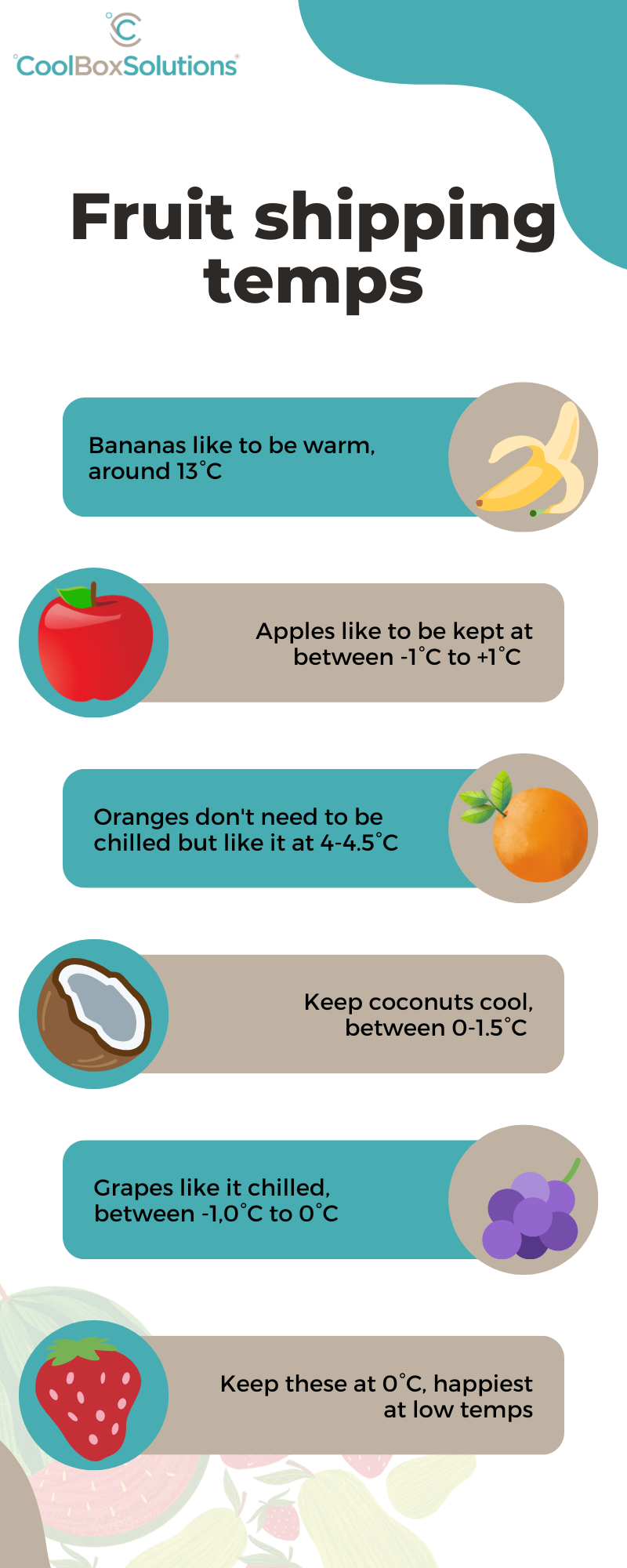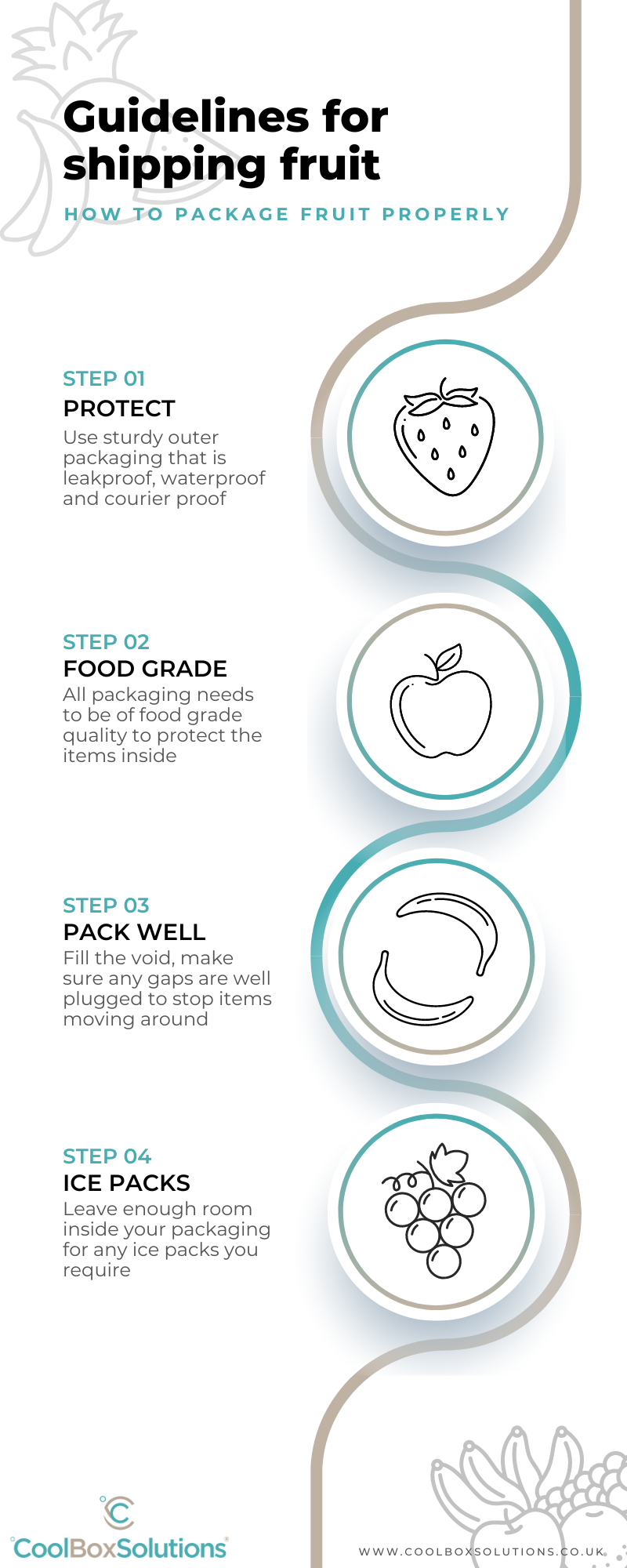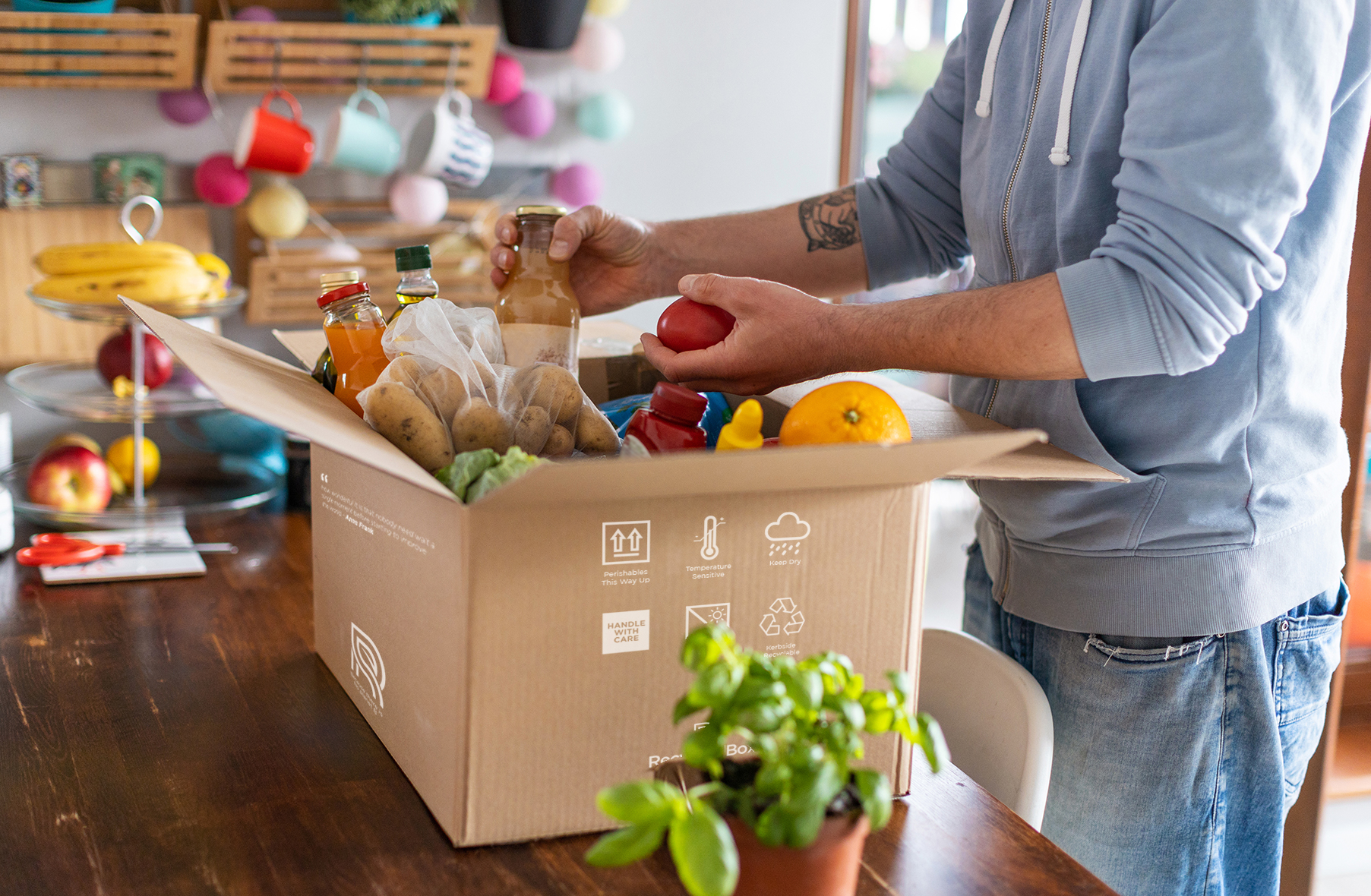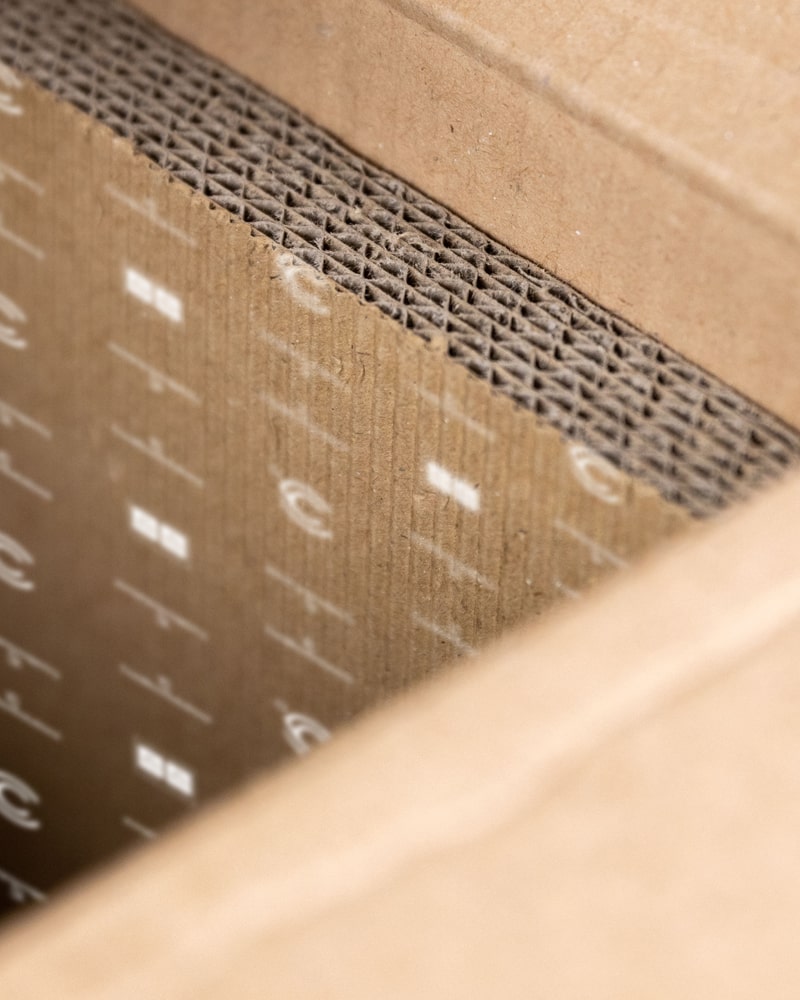The idea of having fruit delivered direct to your door is very a-peel-ing, but you want to be sure that any fruit you order arrives in berry good condition! You’re definitely going to ap-peach-iate a company that has thought about their packaging to make sure everything arrives in pear-fect condition, and at the right temperature!
Puns aside, making sure that you provide the right temperature controlled and protective packaging environment for fruit deliveries is very important. Not only does cutting corners lead to the potential for spoiling and damage but can also have a knock on effect on your reputation if the goods you send don’t arrive in plum-perfect condition.
Which types of fruits need temperature controlled shipping?
As with vegetables (see our Un-Beetable Guide to Shipping Vegetables for more info), different fruits have different tolerances when it comes to temperature during transit. To understand what these are, we first need to look at the different types of fruit we may be shipping – with over 2000 actual different fruits in existence, it’s easiest to break these down into groups.
Which types of fruits need temperature controlled shipping?
As with vegetables (see our Un-Beetable Guide to Shipping Vegetables for more info), different fruits have different tolerances when it comes to temperature during transit. To understand what these are, we first need to look at the different types of fruit we may be shipping – with over 2000 actual different fruits in existence, it’s easiest to break these down into groups.
Berries
Berries are small and juicy fruits, often with thick skins.
Examples include blueberries, grapes and cranberries.
Pits
“Pits” are fruits that have a tougher outer skin that covers the fleshy, soft fruit inside. The middle of the fruit contains a “pit”, a single hard stone, which has the seed of the fruit inside.
Examples include apricots, cherries, peaches, plums and nectarines.
Pome fruits (aka “core”)
Pome, or “core” fruits have a central seed (or several seeds) that are surrounded by a thick fleshy layer.
Examples include pears, quince and apples
Melons
Melons are often large, thick and contain multiple seeds. They are tough on the outside and fleshy on the inside.
Examples include honey dew and casaba melons.
Citrus fruits
Citrus fruits can be quite tart and have a thick outer rind. They have a thin membrane inside which separates the fruit into segments.
Fun fact: watermelons are actually part of the berry family.
Examples include lemons, limes, oranges and grapefruits.
Tropical/exotic
Tropical or exotic fruits are grown in warm climates and do vary in texture, shape and size. They are used to warmer temperatures.
Examples include bananas, figs, coconuts, kiwi fruits, dates and papayas.
Specific fruit shipping
Let’s look at a few of the most common fruits that are shipped on a regular basis, either from the original source or from shops to consumers.

- Bananas: Bananas like being warm, so you’ll not need to chill these guys. They should be carried at around 13°C. they definitely should not be kept any colder than freezing, as even chilling damage can occur quickly, leading to discolouration, failure to ripen, brown flesh inside and problems with peeling. Bananas also need to be handled carefully, as the skin is easily damaged and will tear, scuff or bruise.
- Apples: Most pome fruits are susceptible to exterior bruising, which can damage the fruit inside. Apples are a prime example. They should be handled carefully, as any effects from handling damage cannot be reversed. Apples specifically travel best between -1°C to +1°C, although they can be loaded at around 2°C higher for short amounts of time. Apples are quite sensitive to freezing damage and should not go down to more than 1 degree below freezing, as they start to break down inside.
- Oranges: Not all citrus fruits require temperature controlled shipping, although some do fare better when the temps are cooler. For example, oranges (and similar fruits like tangerines and satsumas) fare best at a consistent temperature of between 4-4.5°C. They can dehydrate if kept at higher temperatures,
- Coconuts – Coconuts like to be cooler, between 0-1.5°C. They can cope at around 2°C above optimum temperature during loading but should be kept cool whilst in transit. The younger the coconut, the more tolerant it will be to temperature fluctuations.
- Grapes – Grapes like to be chilled, so best to carry them between -1,0°C to 0°C. They can tolerate low freezing temperatures, but should not go below -2.5°C, as they can start to break down. Likewise, if exposed consistently to temperatures above 2°C, they will start to dry out, shrivel and crack.
- Strawberries and Raspberries – both of these fruits have a short storage life, and can spoil easily, especially in warm conditions. They need to be kept at 0°C, as high temperatures will cause issues like fungal decay and shrivelling. They are happiest at low temps without freezing. They can be shipped as mixed loads together.
Packaging fruit properly
Once you have your temperature requirements sorted, you need to think about how you’re packaging your fruit items. Again, a lot depends on the fruit itself as different types have different tolerances for handling and movement but there are some rules that apply to all fruit shipments.
- Use sturdy outer packaging, that is waterproof, leak resistant and courier proof
- All packaging needs to be of food grade
- Make sure your fruit is packed well inside. This means filling the void, using packaging fillers if needed to stop items moving around inside, and cushioning where required (especially for fruits prone to bruising or tears). Even round items like coconuts need to be kept still during transit.
- Also make sure you leave enough room for ice packs if they are
Resources:



